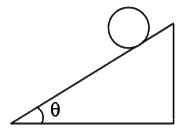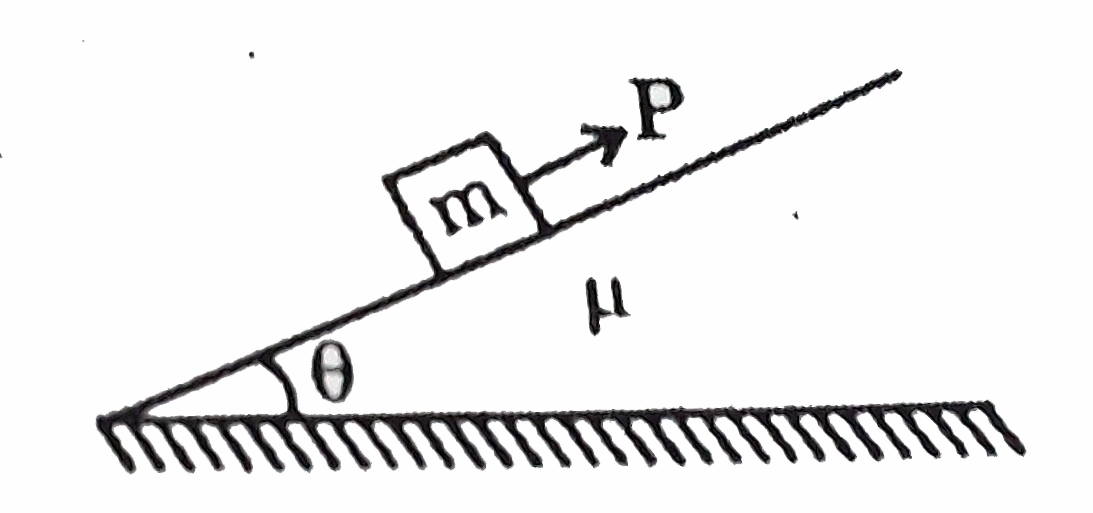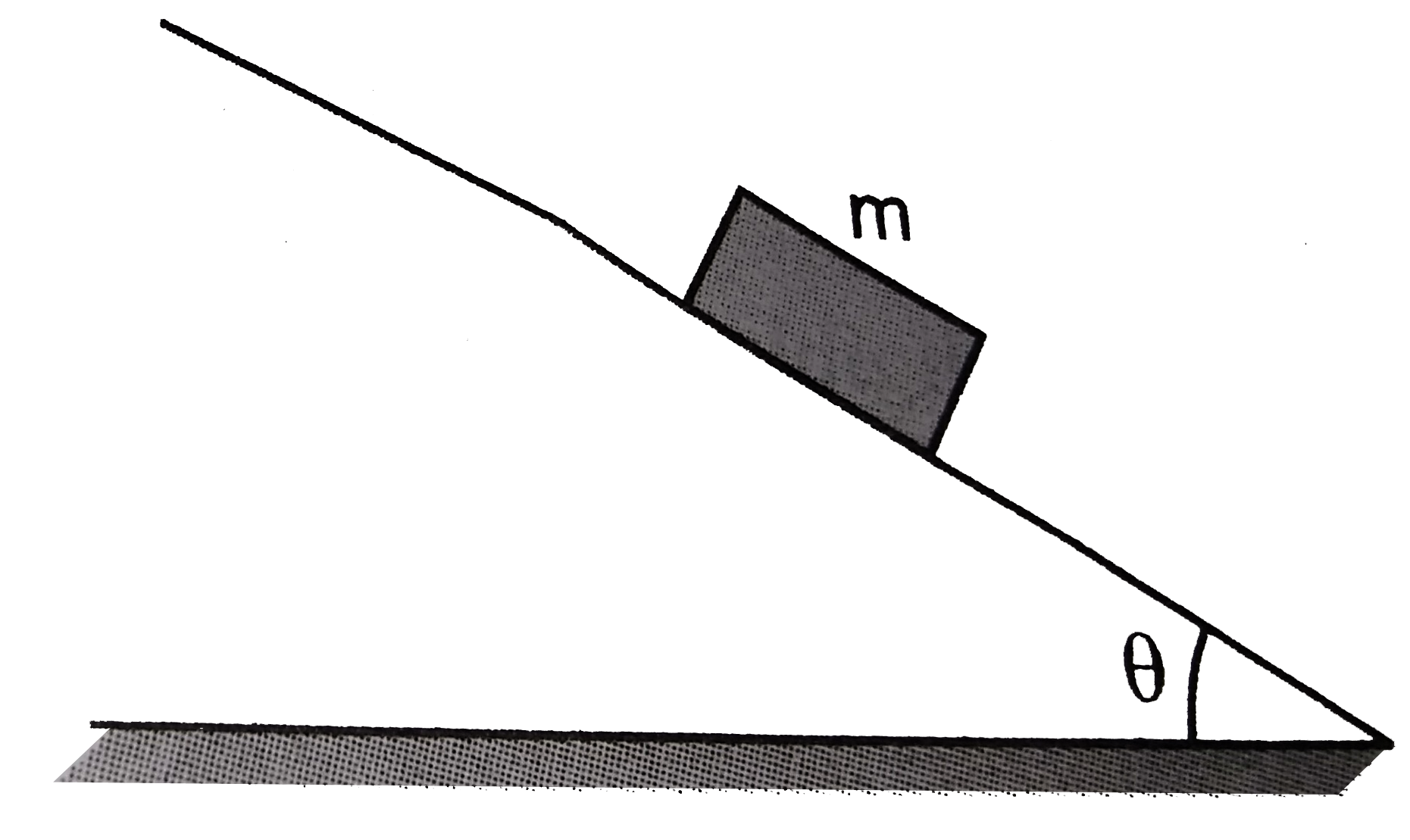A hollow spherical ball is given an initial push, up an incline of inclination angle . The ball rolls purely coefficient of static friction between ball and incline . During its upwards journey.
friction acts up along the incline
friction will be no rotation if
To solve the problem of a hollow spherical ball rolling up an incline, we need to analyze the forces acting on the ball and determine the direction of friction, as well as the minimum coefficient of static friction required for pure rolling.
1. Identify Forces Acting on the Ball:
- The gravitational force acting downward: mg.
- The component of gravitational force acting parallel to the incline: mgsinα.
- The component of gravitational force acting perpendicular to the incline: mgcosα.
- The normal force N acting perpendicular to the incline.
- The frictional force f acting up the incline.
2. Determine the Direction of Friction:
- When the ball is pushed up the incline, it tends to slide back down due to gravity. Therefore, the frictional force must act up the incline to prevent slipping. This means the direction of friction is upward along the incline.
3. Apply Newton's Second Law:
- For the linear motion of the center of mass of the ball:
mgsinα−f=ma
- For the rotational motion about the center of mass:
f⋅R=I⋅α
- For a hollow sphere, the moment of inertia I is given by I=23mR2.
4. Relate Linear Acceleration and Angular Acceleration:
- The relationship between linear acceleration a and angular acceleration α for pure rolling is:
a=αR
5. Substituting the Moment of Inertia:
- From the rotational motion equation:
f⋅R=23mR2⋅aR
- Simplifying gives:
f=23ma
6. Substituting f into the Linear Motion Equation:
- Substitute f into the linear motion equation:
mgsinα−23ma=ma
- Rearranging gives:
mgsinα=ma+23ma=53ma
- Therefore, the acceleration a is:
a=35gsinα
7. Finding the Minimum Coefficient of Static Friction:
- The frictional force f can also be expressed in terms of the coefficient of static friction μ:
f=μN=μmgcosα
- Setting the two expressions for f equal gives:
23ma=μmgcosα
- Substituting a:
23m(35gsinα)=μmgcosα
- Simplifying leads to:
25gsinα=μgcosα
- Canceling g and rearranging gives:
μ=25tanα
Final Answers:
- The direction of friction is up the incline.
- The minimum coefficient of static friction μmin is 25tanα.
- The gravitational force acting downward: mg.
- The component of gravitational force acting parallel to the incline: mgsinα.
- The component of gravitational force acting perpendicular to the incline: mgcosα.
- The normal force N acting perpendicular to the incline.
- The frictional force f acting up the incline.
- When the ball is pushed up the incline, it tends to slide back down due to gravity. Therefore, the frictional force must act up the incline to prevent slipping. This means the direction of friction is upward along the incline.
- For the linear motion of the center of mass of the ball:
mgsinα−f=ma
- For the rotational motion about the center of mass:
f⋅R=I⋅α
- For a hollow sphere, the moment of inertia I is given by I=23mR2.
- The relationship between linear acceleration a and angular acceleration α for pure rolling is:
a=αR
- From the rotational motion equation:
f⋅R=23mR2⋅aR
- Simplifying gives:
f=23ma
- Substitute f into the linear motion equation:
mgsinα−23ma=ma
- Rearranging gives:
mgsinα=ma+23ma=53ma
- Therefore, the acceleration a is:
a=35gsinα
- The frictional force f can also be expressed in terms of the coefficient of static friction μ:
f=μN=μmgcosα
- Setting the two expressions for f equal gives:
23ma=μmgcosα
- Substituting a:
23m(35gsinα)=μmgcosα
- Simplifying leads to:
25gsinα=μgcosα
- Canceling g and rearranging gives:
μ=25tanα
- The direction of friction is up the incline.
- The minimum coefficient of static friction μmin is 25tanα.
Topper's Solved these Questions
- ROTATIONAL MECHANICSBOOK - DC PANDEYCHAPTER - ROTATIONAL MECHANICSEXERCISE - Level 2
1 Videos
- ROTATIONAL MECHANICSBOOK - DC PANDEYCHAPTER - ROTATIONAL MECHANICSEXERCISE - Level 2 Subjective
36 Videos
- ROTATIONAL MECHANICSBOOK - DC PANDEYCHAPTER - ROTATIONAL MECHANICSEXERCISE - Level 2 Single Correct
26 Videos
- ROTATIONBOOK - DC PANDEYCHAPTER - ROTATIONEXERCISE - (C) Chapter Exercises
39 Videos
- ROTATIONAL MOTIONBOOK - DC PANDEYCHAPTER - ROTATIONAL MOTIONEXERCISE - Integer Type Questions
17 Videos
Similar Questions
Knowledge Check
A hollow sphere of mass m and radius R is rolling downdard on a rough inclined plane of inclination θ. If the coefficient of friction between the hollow sphere and incline is μ, then
AFriction opposes its translationBFriction supports rotation motionCOn decreasing θ, frictional force decreasesDAll of theseA solid cylinder of mass m and radius r is rolling on a rough inclined plane of inclination θ. The coefficient of friction between the cylinder and incline is μ. Then.
Africtional force is always μmgcosθBfriction is a dissipative forceCby decreasing θ, frictional force decreasesDfrictiona opposes translation and supports rotation.A spherical shell of radius R is rolling down an incline of inclination θ without slipping. Find minimum value of coefficient of friction.
 A27tanθB25tanθC23tanθDNone
A27tanθB25tanθC23tanθDNone
A box is lying on an inclined plane if the box slides when the angle of inclination is 60∘ then the coefficient of static friction of the box and the plane is?
View SolutionA block of mass m is being pulled up the rough incline , inclined at angle θ with horizontal by an agent delivering constant power P. The coefficient of friction between block & incline is μ. Then during the upward motion along the inclined plane , maximum velocity of the block will be :

View SolutionA block is stationary on an inclined plane If the coefficient of friction between the block and the plane is μ then
 .
.
View SolutionA box is lying on an inclined plane what is the coefficient of static friction if the box starts sliding when an angle of inclination is 60∘
View SolutionA solid cylinder is rolling down on an inclined plane of angle θ. The minimum value of the coefficient of friction between the plane and the cylinder to allow pure rolling
View Solution
